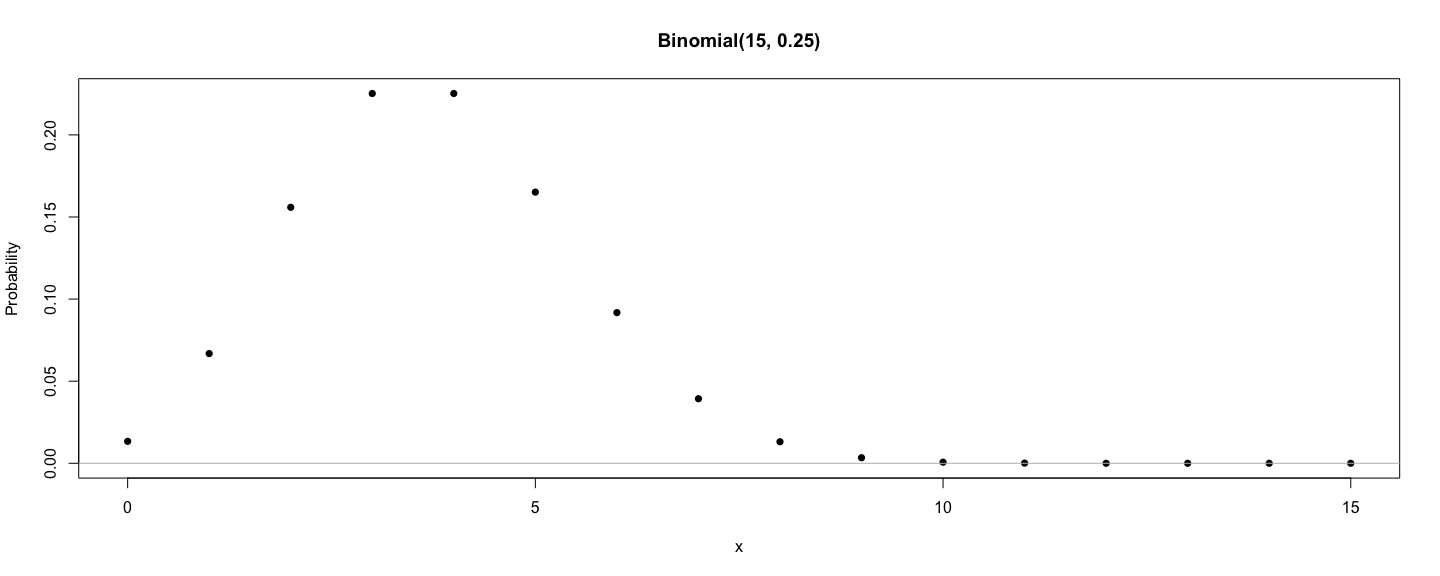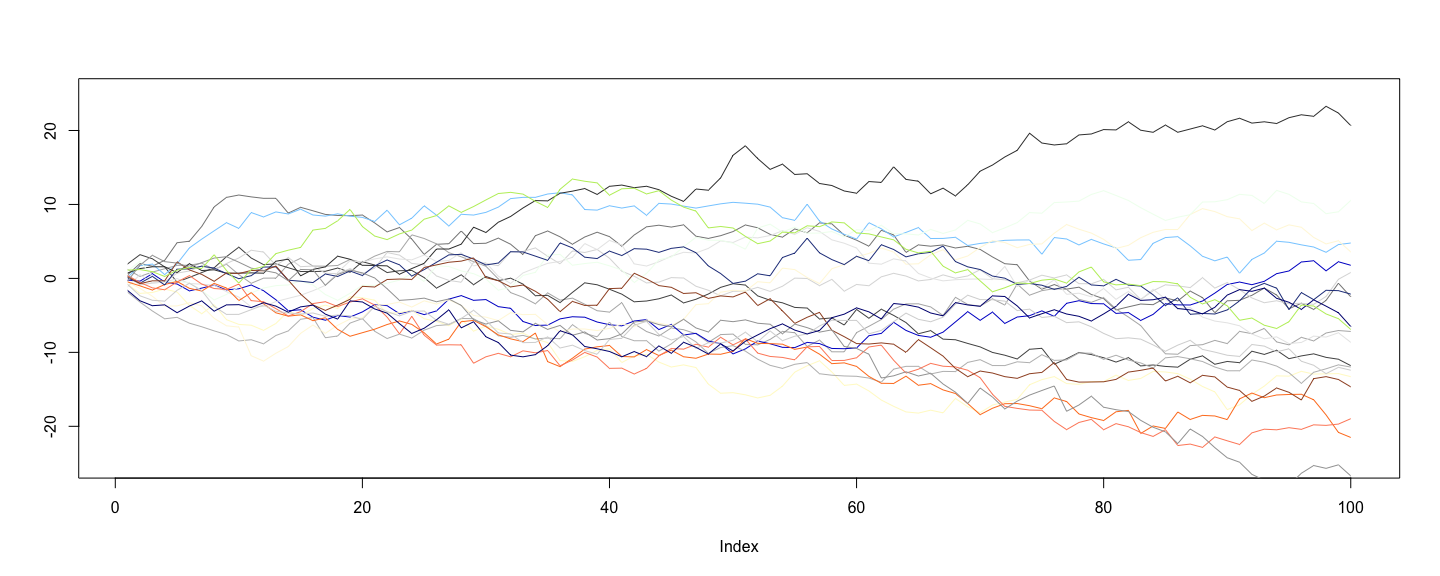class: center, middle # An Overview of R - 1 ## Introductory Computer Programming ### Deepayan Sarkar <h1 onclick="document.documentElement.requestFullscreen();" style="cursor: pointer;"> <svg xmlns="http://www.w3.org/2000/svg" width="16" height="16" fill="currentColor" class="bi bi-arrows-fullscreen" viewBox="0 0 16 16"> <path fill-rule="evenodd" d="M5.828 10.172a.5.5 0 0 0-.707 0l-4.096 4.096V11.5a.5.5 0 0 0-1 0v3.975a.5.5 0 0 0 .5.5H4.5a.5.5 0 0 0 0-1H1.732l4.096-4.096a.5.5 0 0 0 0-.707zm4.344 0a.5.5 0 0 1 .707 0l4.096 4.096V11.5a.5.5 0 1 1 1 0v3.975a.5.5 0 0 1-.5.5H11.5a.5.5 0 0 1 0-1h2.768l-4.096-4.096a.5.5 0 0 1 0-.707zm0-4.344a.5.5 0 0 0 .707 0l4.096-4.096V4.5a.5.5 0 1 0 1 0V.525a.5.5 0 0 0-.5-.5H11.5a.5.5 0 0 0 0 1h2.768l-4.096 4.096a.5.5 0 0 0 0 .707zm-4.344 0a.5.5 0 0 1-.707 0L1.025 1.732V4.5a.5.5 0 0 1-1 0V.525a.5.5 0 0 1 .5-.5H4.5a.5.5 0 0 1 0 1H1.732l4.096 4.096a.5.5 0 0 1 0 .707z"/> </svg> </h1> --- # Software for Statistics - Computation is an essential part of modern statistics - Handling large datasets - Visualization - Simulation - Iterative methods - Many softwares are available for such computation, but we will focus on R -- - Why R? - Available as [Free](https://en.wikipedia.org/wiki/Free_software_movement) / [Open Source](https://en.wikipedia.org/wiki/The_Open_Source_Definition) Software - Very popular (both academia and industry) - Easy to try out on your own -- - Also because I know R better than other languages - Python and Julia are other good alternatives --- # Outline - Installing R (hopefully most of you have already done this) - Basics of using R - Some examples --- # Installing R * R is most commonly used as a [REPL](https://en.wikipedia.org/wiki/Read-eval-print_loop) (Read-Eval-Print-Loop) * When it is started, R Waits for user input * Evaluates and prints result * Waits for more input -- * There are several different _interfaces_ to do this * R itself works on many platforms (Windows, Mac, UNIX, Linux) * Some interfaces are platform-specific, some work on most -- * R and the interface may need to be installed separately --- # Installing R * Go to <https://cran.r-project.org/> (or choose a [mirror](https://cran.r-project.org/mirrors.html) first) * Follow instructions depending on your platform (Windows for most of you) -- * This will install R, as well as a default graphical interface on Windows and Mac -- * I will recommend a different interface called [R Studio](https://www.rstudio.com/) that needs to be installed separately * I personally use yet another interface called [ESS](https://ess.r-project.org/) with a general-purpose editor called [Emacs](https://www.gnu.org/software/emacs/) --- # Running R * Once installed, you can start the appropriate interface (or R directly) to get something like this: ``` R version 4.0.3 (2020-10-10) -- "Bunny-Wunnies Freak Out" Copyright (C) 2020 The R Foundation for Statistical Computing Platform: x86_64-apple-darwin19.6.0 (64-bit) R is free software and comes with ABSOLUTELY NO WARRANTY. You are welcome to redistribute it under certain conditions. Type 'license()' or 'licence()' for distribution details. R is a collaborative project with many contributors. Type 'contributors()' for more information and 'citation()' on how to cite R or R packages in publications. Type 'demo()' for some demos, 'help()' for on-line help, or 'help.start()' for an HTML browser interface to help. Type 'q()' to quit R. > ``` * The `>` represents a _prompt_ indicating that R is waiting for input. * The difficult part is to learn what to do next --- # The R REPL essentially works like a calculator ```r 34 * 23 ``` ``` [1] 782 ``` ```r 27 / 7 ``` ``` [1] 3.857143 ``` ```r exp(2) ``` ``` [1] 7.389056 ``` ```r 2^10 ``` ``` [1] 1024 ``` --- # R has standard mathematical functions ```r sqrt(5 * 125) ``` ``` [1] 25 ``` ```r log(120) ``` ``` [1] 4.787492 ``` ```r factorial(10) ``` ``` [1] 3628800 ``` ```r log(factorial(10)) ``` ``` [1] 15.10441 ``` --- # R has standard mathematical functions ```r choose(15, 5) ``` ``` [1] 3003 ``` ```r factorial(15) / (factorial(10) * factorial(5)) ``` ``` [1] 3003 ``` -- ```r choose(1500, 2) ``` ``` [1] 1124250 ``` ```r factorial(1500) / (factorial(1498) * factorial(2)) ``` ``` [1] NaN ``` --- # R supports variables ```r x <- 2 y <- 10 x^y ``` ``` [1] 1024 ``` ```r y^x ``` ``` [1] 100 ``` ```r factorial(y) ``` ``` [1] 3628800 ``` ```r log(factorial(y), base = x) ``` ``` [1] 21.79106 ``` --- # R can compute on vectors ```r N <- 15 x <- seq(0, N) N ``` ``` [1] 15 ``` ```r x ``` ``` [1] 0 1 2 3 4 5 6 7 8 9 10 11 12 13 14 15 ``` ```r choose(N, x) ``` ``` [1] 1 15 105 455 1365 3003 5005 6435 6435 5005 3003 1365 455 105 15 1 ``` --- # R has functions for statistical calculations ```r p <- 0.25 choose(N, x) * p^x * (1-p)^(N-x) ``` ``` [1] 1.336346e-02 6.681731e-02 1.559070e-01 2.251991e-01 2.251991e-01 1.651460e-01 9.174777e-02 [8] 3.932047e-02 1.310682e-02 3.398065e-03 6.796131e-04 1.029717e-04 1.144130e-05 8.800998e-07 [15] 4.190952e-08 9.313226e-10 ``` ```r dbinom(x, size = N, prob = p) ``` ``` [1] 1.336346e-02 6.681731e-02 1.559070e-01 2.251991e-01 2.251991e-01 1.651460e-01 9.174777e-02 [8] 3.932047e-02 1.310682e-02 3.398065e-03 6.796131e-04 1.029717e-04 1.144130e-05 8.800998e-07 [15] 4.190952e-08 9.313226e-10 ``` --- # R has functions that work on vectors ```r p.x <- dbinom(x, size = N, prob = p) sum(x * p.x) / sum(p.x) ``` ``` [1] 3.75 ``` ```r N * p ``` ``` [1] 3.75 ``` --- # R can draw graphs ```r plot(x, p.x, ylab = "Probability", pch = 16) title(main = sprintf("Binomial(%g, %g)", N, p)) abline(h = 0, col = "grey") ```  \ --- # R can simulate random variables ```r cards <- as.vector(outer(c("H", "D", "C", "S"), 1:13, paste)) cards ``` ``` [1] "H 1" "D 1" "C 1" "S 1" "H 2" "D 2" "C 2" "S 2" "H 3" "D 3" "C 3" "S 3" "H 4" [14] "D 4" "C 4" "S 4" "H 5" "D 5" "C 5" "S 5" "H 6" "D 6" "C 6" "S 6" "H 7" "D 7" [27] "C 7" "S 7" "H 8" "D 8" "C 8" "S 8" "H 9" "D 9" "C 9" "S 9" "H 10" "D 10" "C 10" [40] "S 10" "H 11" "D 11" "C 11" "S 11" "H 12" "D 12" "C 12" "S 12" "H 13" "D 13" "C 13" "S 13" ``` -- ```r sample(cards, 13) ``` ``` [1] "D 4" "D 1" "D 7" "D 9" "C 8" "H 12" "S 12" "D 8" "S 9" "H 2" "D 6" "C 4" "H 5" ``` ```r sample(cards, 13) ``` ``` [1] "C 5" "S 6" "S 9" "S 3" "C 12" "D 9" "D 3" "C 8" "D 4" "S 8" "C 7" "D 2" "S 11" ``` --- # R can simulate random variables ```r z <- rnorm(50, mean = 0, sd = 1) z ``` ``` [1] -0.35881905 -1.03417675 -1.33638696 -1.66146785 -0.96042670 0.67585936 0.57335724 -1.87385190 [9] -0.40798688 0.57243941 0.16057616 0.02660315 0.64993229 1.15937452 -0.17677525 0.82469443 [17] -0.29641834 -0.91972462 -1.77191374 0.75219387 -1.42906152 -0.52755159 1.72622568 -0.05394051 [25] -1.99618976 1.66291284 0.42827317 1.37329212 0.35032933 1.02496673 -1.54762037 -0.10031568 [33] -0.78021340 -0.83779551 0.25937539 0.25027196 -0.93206311 -1.16235345 -0.08591635 0.87588717 [41] -0.31723365 -0.45890017 -1.01457091 0.90673169 0.46920924 1.78821720 -0.49774941 0.49501141 [49] -2.81175862 -0.48808573 ``` --- # Example: random walk ```r plot(1:100, type = "n", ylim = c(-25, 25), ylab = "") for (i in 1:20) { z <- rnorm(100, mean = 0, sd = 1) lines(cumsum(z), col = sample(colors(), 1)) } ```  \ --- # R is in fact a full programming language * Variables * Functions * Control flow structures * For loops, while loops * If-then-else (branching) -- * Distinguishing features * Focus on _vectors_ and _vectorized operations_ * Treatment of _functions_ at par with other object types * We will next see a few examples to illustrate what I mean by this